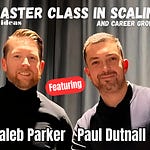Brave Ideas Season 15, Episode 10
This episode is made possible by ReturnSuite:
”Complex Cash Flow Modeling Simplified.”
Valuation, brand, and the lease-to-management spectrum
In this episode, Brave Corp CEO, Caleb Parker, is joined by Carl-Johan Collet in the Brave Ideas Virtual Studio from Copenhagen, Denmark.
In addition to his role at Catella, Carl-Johan is Co-Chair of ULI’s Operational Real Estate Forum, alongside Valentina Shegoyan.
Tune into this final episode of Season 15 to hear why operational real estate is spreading across asset classes, how brand matters for investors and landlords, why office valuation must move from binary leases to modeling variable cash flows directly and how insurance-style risk modeling can better price variability in operating income.
What You’ll Learn in This Episode
What “operational real estate” means in practice, and why focused customer segments, brand, and tech sit at the core across office, living, hotels, logistics, and more.
Why brand is an outcome of consistent service to a defined customer, earning trust and pricing power.
How office valuation can evolve by pricing risk in the cash flows, borrowing methods from insurance rather than hiding risk in higher discount rates.
Where alignment lives along the structure spectrum, from fixed leases to hybrid base-plus-participation to management agreements.
Why many flex operators will take 10–15-year terms while most office tenants still prefer three to five.
Key Takeaways for Operators
Define your sharpest customer segment, then build service delivery and amenities for that user, not the average occupier, to unlock willingness to pay.
Brand is the result of delivering the same promise, every time; consistency is what compounds trust and demand.
Expect more variable revenue over time, and be ready to evidence it with operational data that supports insurance-style risk modeling.
Key Takeaways for Real Estate Investors
Model variability where it lives, in NOI, using scenario-based methods so both downside protection and upside share are explicit.
Choose structures that match capital and exit: core buyers may prefer leases, core-plus may accept hybrids, long-term owners can lean into management agreements for upside.
Pick the right operator for the building’s location and customer base, alignment matters more than face rent when the business is operational.
CONNECT
💡 This episode is part of Brave Ideas Season 15, exploring brave ideas shaping the future of office real estate, Space-as-a-Service, and workplace experience.
Join the Conversation
🎧 Listen now and see how operational real estate reframes office valuation by pricing risk in the cash flows, why brand as an outcome drives loyalty and price, and how the spectrum from fixed leases to hybrid leases to management agreements aligns owners and operators; then drop a comment with your favourite soundbite. #PlusNotVersus


















